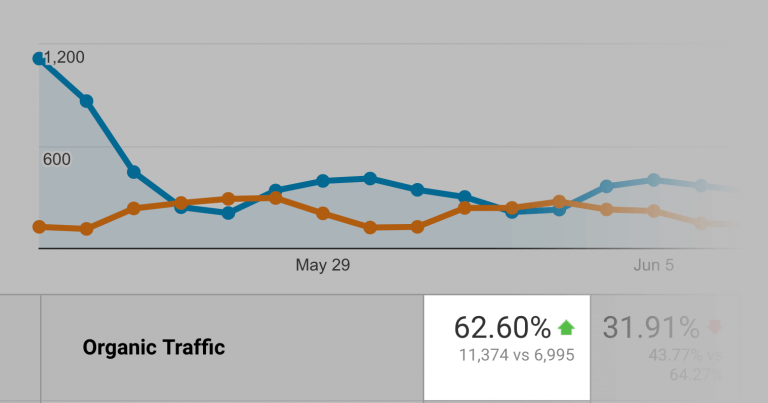Effective SEO Strategy In 2020
An SEO strategy (also referred to as “SEO approach” or “search engine optimization strategy”) is the process of planning, outlining and implementing steps designed to improve search engine rankings.
In other words: an SEO strategy is the process that you follow when you want to get more organic traffic.
With that, here are the steps to create an SEO strategy in 2020:
- Step 1: Create a List of Keywords
- Step 2: Analyze Google’s First Page
- Step 3: Create Something Different or Better
- Step 4: Add a Hook
- Step 5: Optimize For On-Page SEO
- Step 6: Optimize For Search Intent
- Step 7: Make Your Content Look Awesome
- Step 8: Build Links to Your Page
- Step 9: Improve and Update Your Content
01
Create a List of Keywords
Everything in search engine optimization revolves around keywords.Which is why keyword research is usually the first step of any legit SEO strategy.
You can easily find keywords that your target customer searches for using Google Suggest.
Start typing a keyword into Google’s search field, and it will populate a list of suggestions:
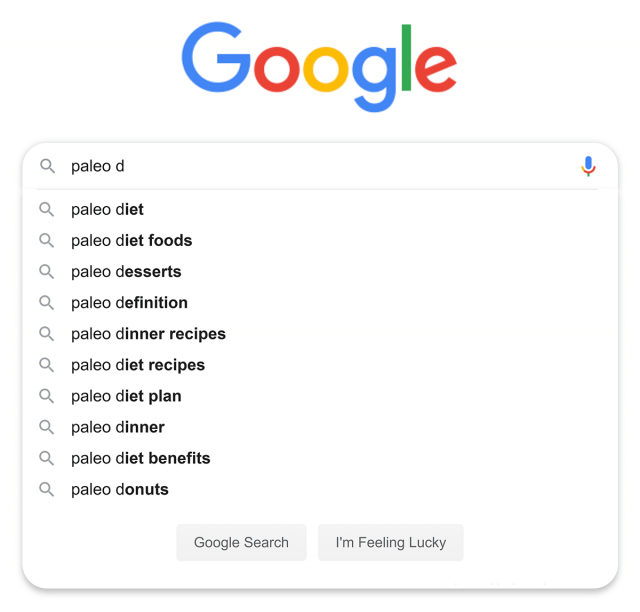
These usually make awesome keywords for SEO because they come straight from Google.
So you know that people are actually searching for them.
Plus, longer keywords (known as “long tail keywords”) tend to be less competitive than “short tail” terms.
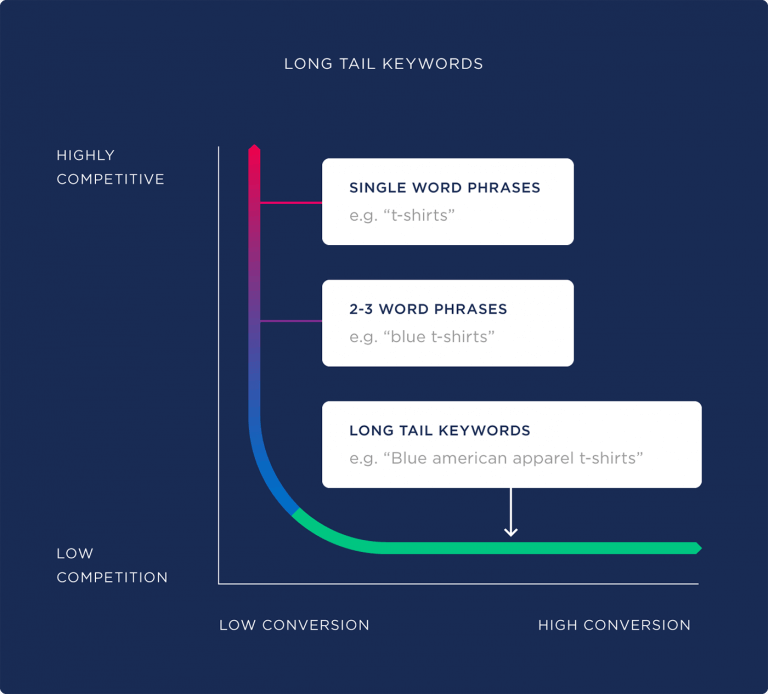
So even though long tails have relatively low search volume levels, you can usually rank for them faster.
I recommend typing a few different keywords into Google until you have a list of about 10 keywords.
If you want to check out the search volume and competition levels for those terms, you can use a keyword tool like SEMrush or Ubersuggest.
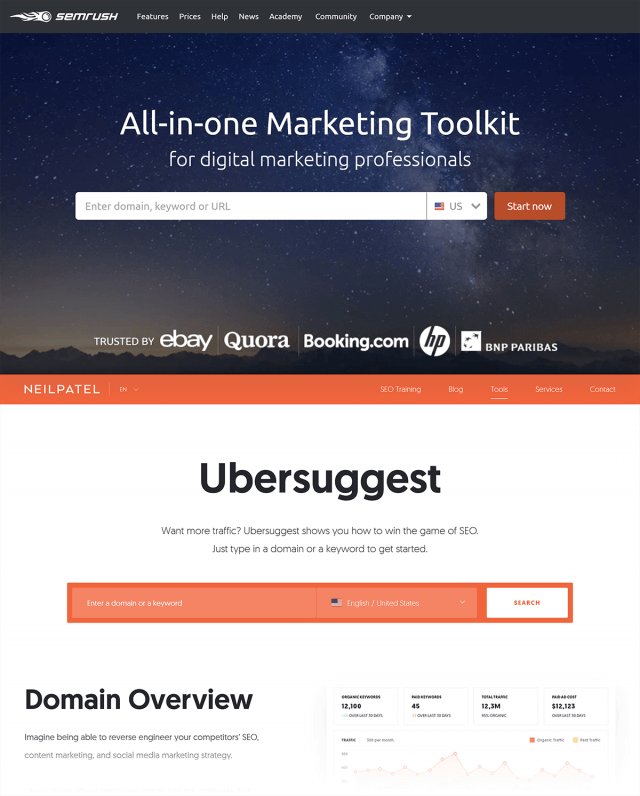
Once you have 10 keywords jotted down, you’re ready for step #2 of this SEO strategy.
02
Analyze Google’s First Page
OK, so you found a handful of keywords.
Now it’s time to see what’s already working for those keywords.
To do that, just type one of the keywords that you found into Google.
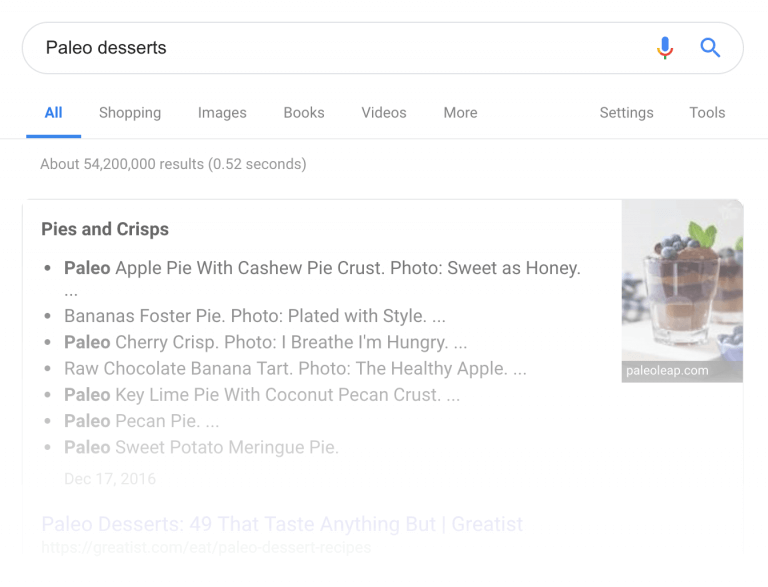
Scan the top 10 results:
And jot down any patterns that you notice.
For example, the SERPs for “SEO Tools” is PACKED with lists of tools:
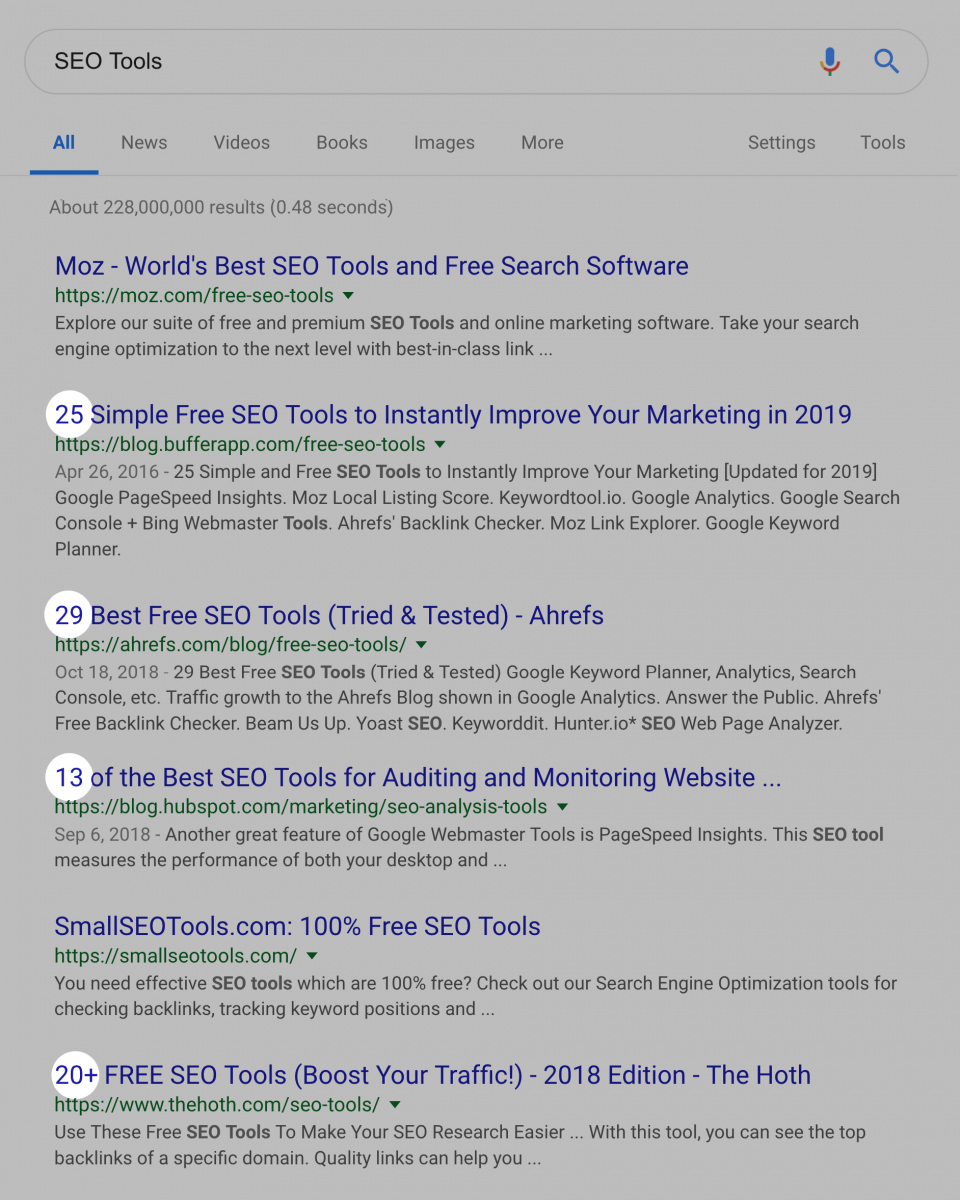
So if you wanted to cover that topic on your site, you’d want to note that the first page results are made up mostly of list posts.
And you’d probably want to publish a list post on your blog.
03
Create Something Different or Better
Now it’s time to create some super high-quality content.
When it comes to SEO content, you’ve got two options:
Option #1: You can create something different.
Option #2: You can create something better.
Different
Sometimes you want to create something bigger and better than what’s out there.
But sometimes you’re better off with content that’s completely different.
Why?Because it helps your content STAND OUT.
For example:
A few months ago I sat down to write a piece of content optimized around: “Mobile SEO”.
And I noticed Google’s first page was littered with list posts, like: “X Ways to Mobile Optimize Your Site.”
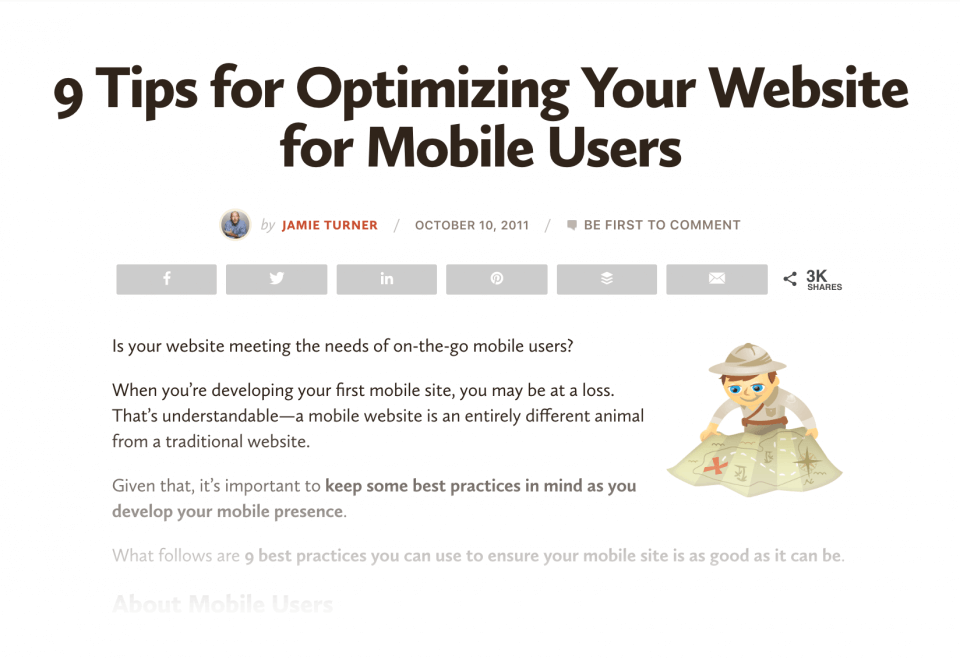
Better
All you need to do here is publish content that’s 10x better than what’s out there.
For example:
A while back I noticed that most content about “SEO tools” only listed 10-20 tools.
And I knew that publishing another list of 20 tools wouldn’t work.
That post now ranks in the top 3 for the keyword “SEO Tools”:
04
Add a Hook
According to a recent study by Stone Temple Consulting that was published on the Moz blog, links are still strongly correlated with first page Google rankings.

The question is: how do you do it
Well, you need to figure out why people link to specific pieces of content in your industry.
(“The Hook”)
Then, include that “Hook” in your content.
05
Optimize For On-Page SEO
This step is all about keyword-optimizing your content for SEO.
Internal Linking
internal linking still works.
But you have to do it right.
Specifically, you want to link FROM high-authority web pages TO pages that need authority.

(And use keyword-rich anchor text in your internal links)
Semantic SEO
Finally, I optimize my content for Semantic SEO.
In other words:
I find words that are related to my target keyword.
Then, I use those terms in my content.
Here are the deets:
First, pop your keyword into Google Images.
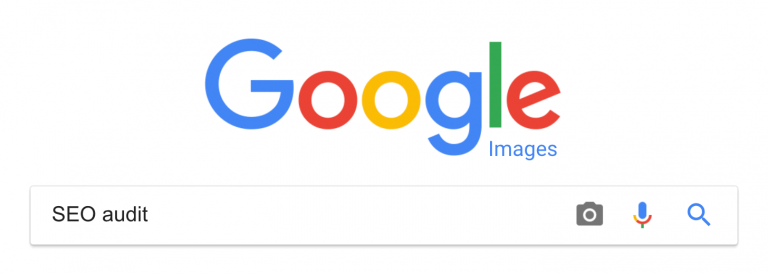
And Google will give you words and phrases they consider closely-related to that topic:

Second, type the same keyword into normal Google search. And scroll down to the “Searches related to…” section.
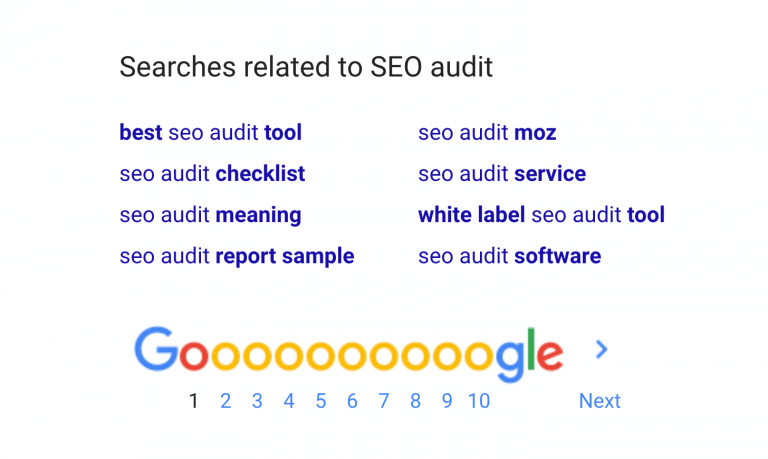
Finally, sprinkle some of those terms into your content:
And you’re set.
06
Optimize For Search Intent
In other words: The Skyscraper Technique 2.0.
when I analyzed Google’s first page, I realized why:
My page didn’t satisfy search intent for that keyword.
Most of the content ranking for “increase website traffic” listed bite-sized traffic tips.

I saw that most of the content ranking for “SEO Audit” listed out non-technical steps.
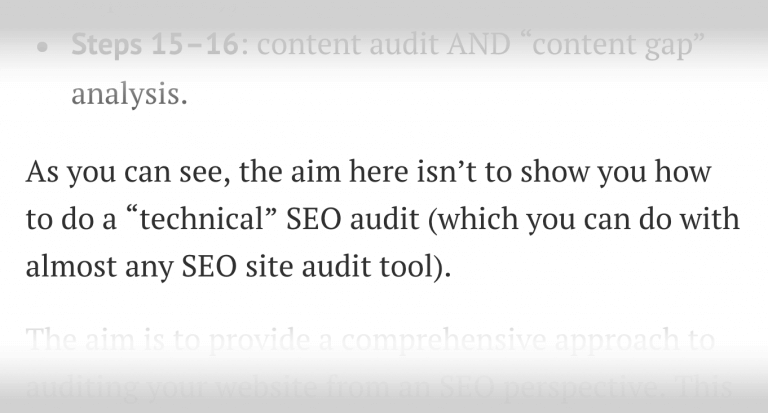
So I included simple strategies that anyone could use:
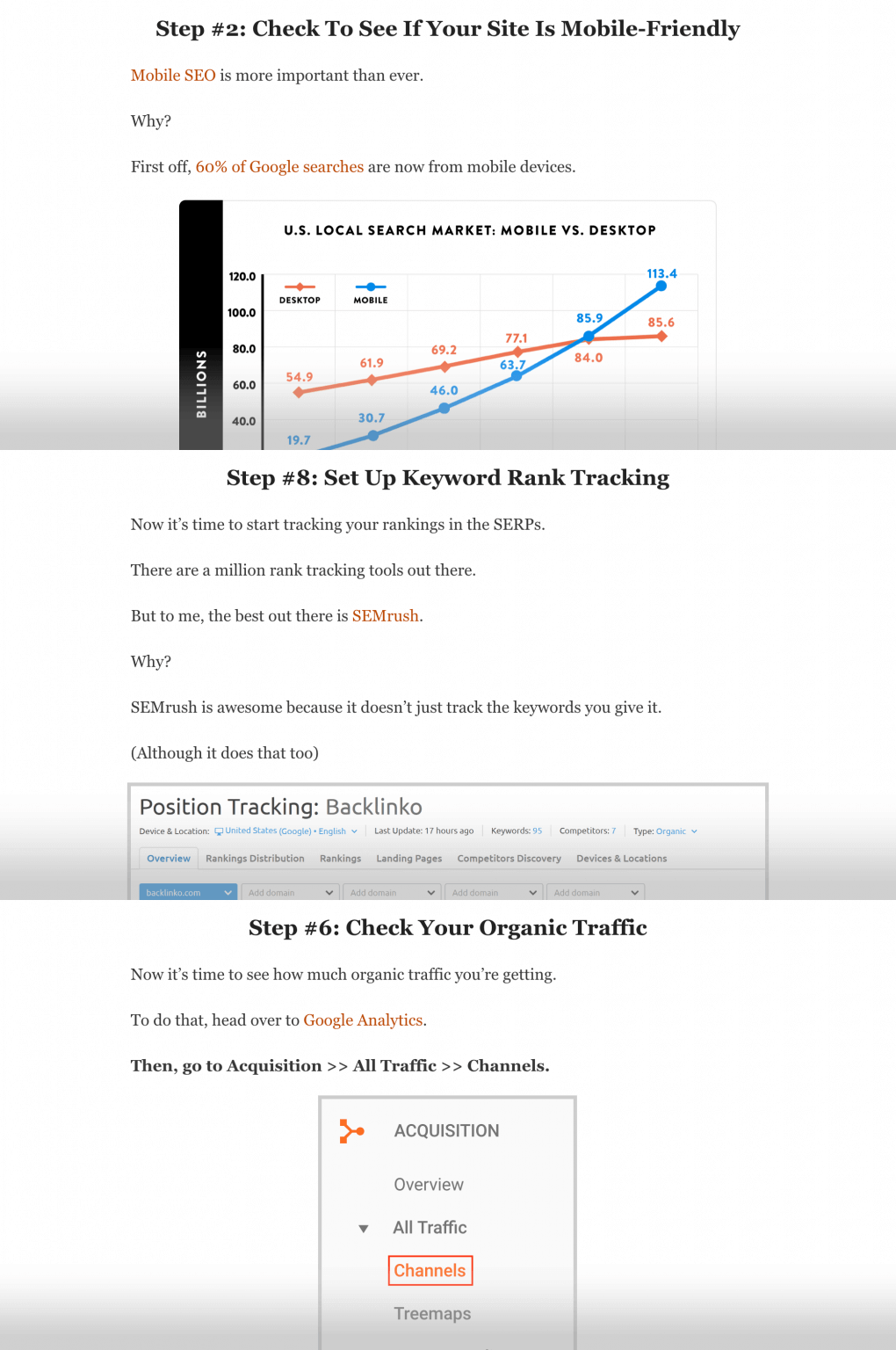
I even emphasized the fact that my audit was non-technical.
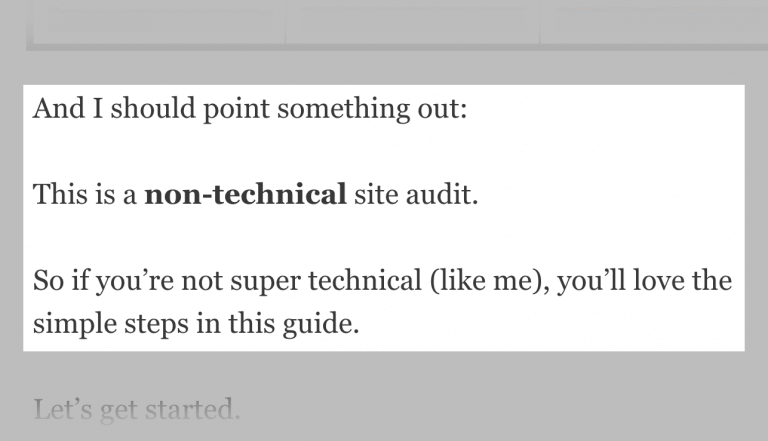
(This hooks people so they don’t bounce back to the search results)
07
Make Your Content Look Awesome
Design might be the most underrated part of content marketing.
You can have the best content ever written.:
But if it looks like this…
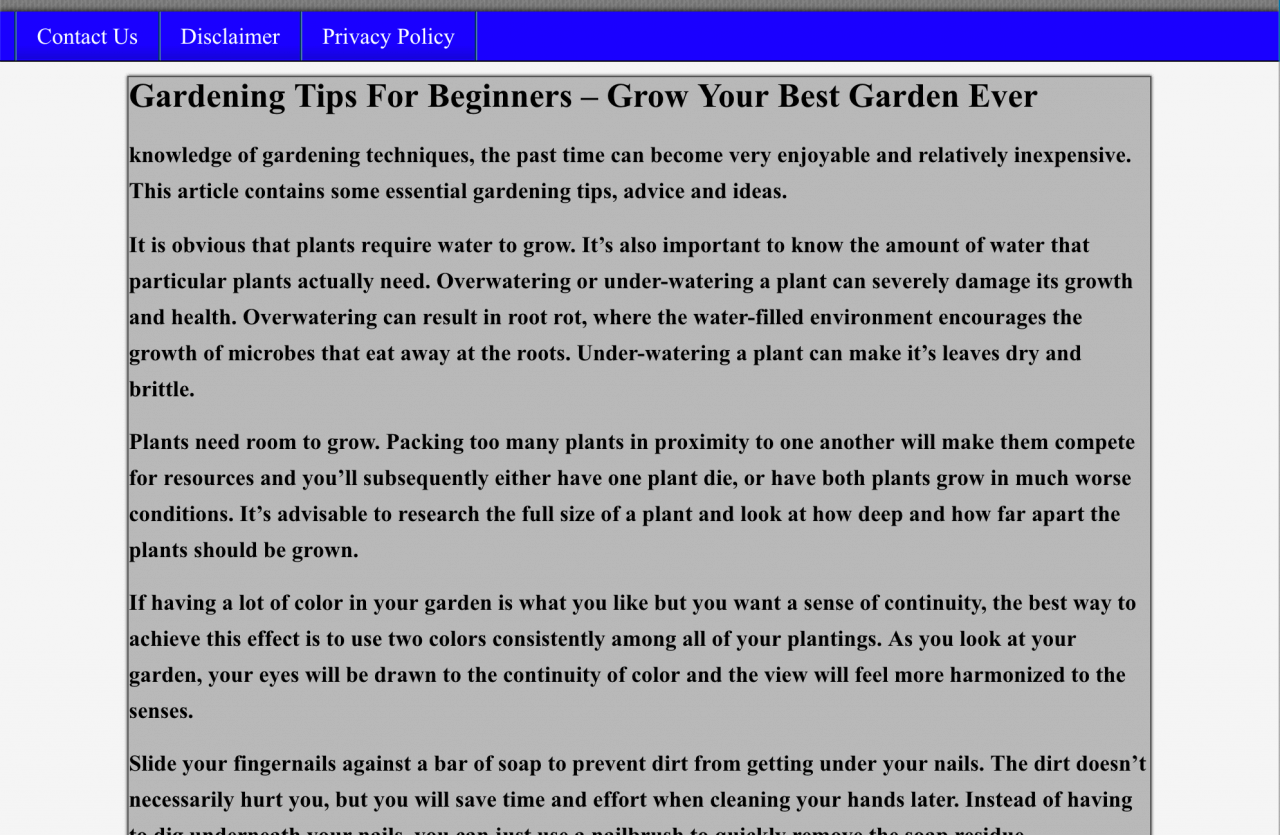
…it’s not gonna work.
That’s why I invest a ton of time and money into content design.
Graphs and Charts
These work so well that I try to include at least one chart in every post.

Why?
Because they make hard data easy to understand.
For example, take this stat from my mobile SEO guide.

I don’t know about you, but I have a hard time picturing 27.8 billion anything.
So I had our designer create a nice chart.
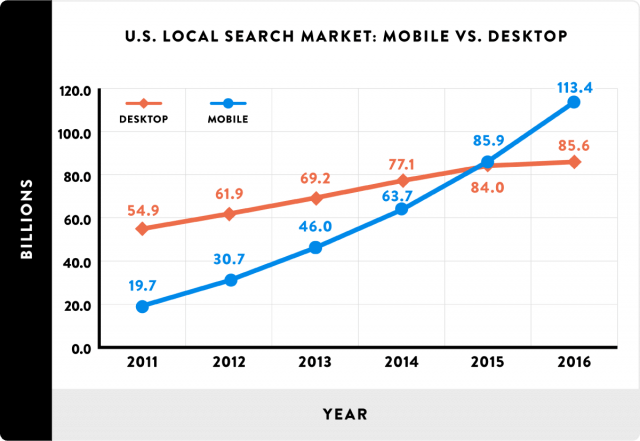
As a bonus, people will sometimes use your chart in a blog post… and link back to you:

For example, these screenshots make the 2 steps from this guide dead-simple to follow:
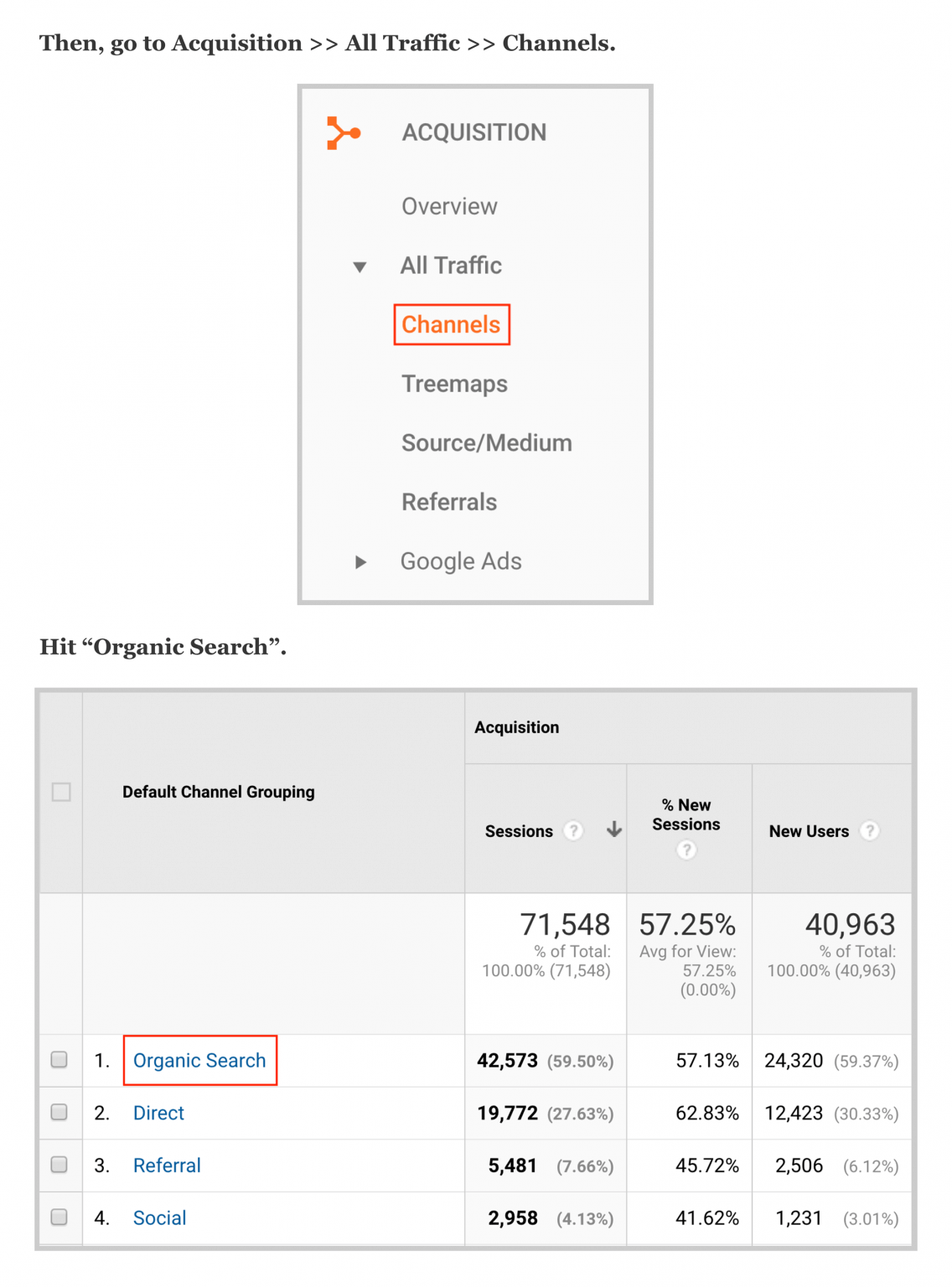
That said:
Screenshots only make sense when you describe something technical.
What if you’re in a non-technical niche… like fitness?
Well, pictures serve the same purpose.
Blog Post Banners
Unlike graphs and screenshots, blog post banners serve no practical purpose.
They just look cool 🙂
Depending on the post, I either use a right-aligned 220×200 image or a giant banner at the top of the post:
Graphics and Visualizations
Graphics and visualizations are kind of like charts.
But instead of visualizing data, they visualize concepts.
To be clear:
These DON’T have to be fancy.
For example, in this post I explain how all 4 versions of your site should redirect to the same URL:
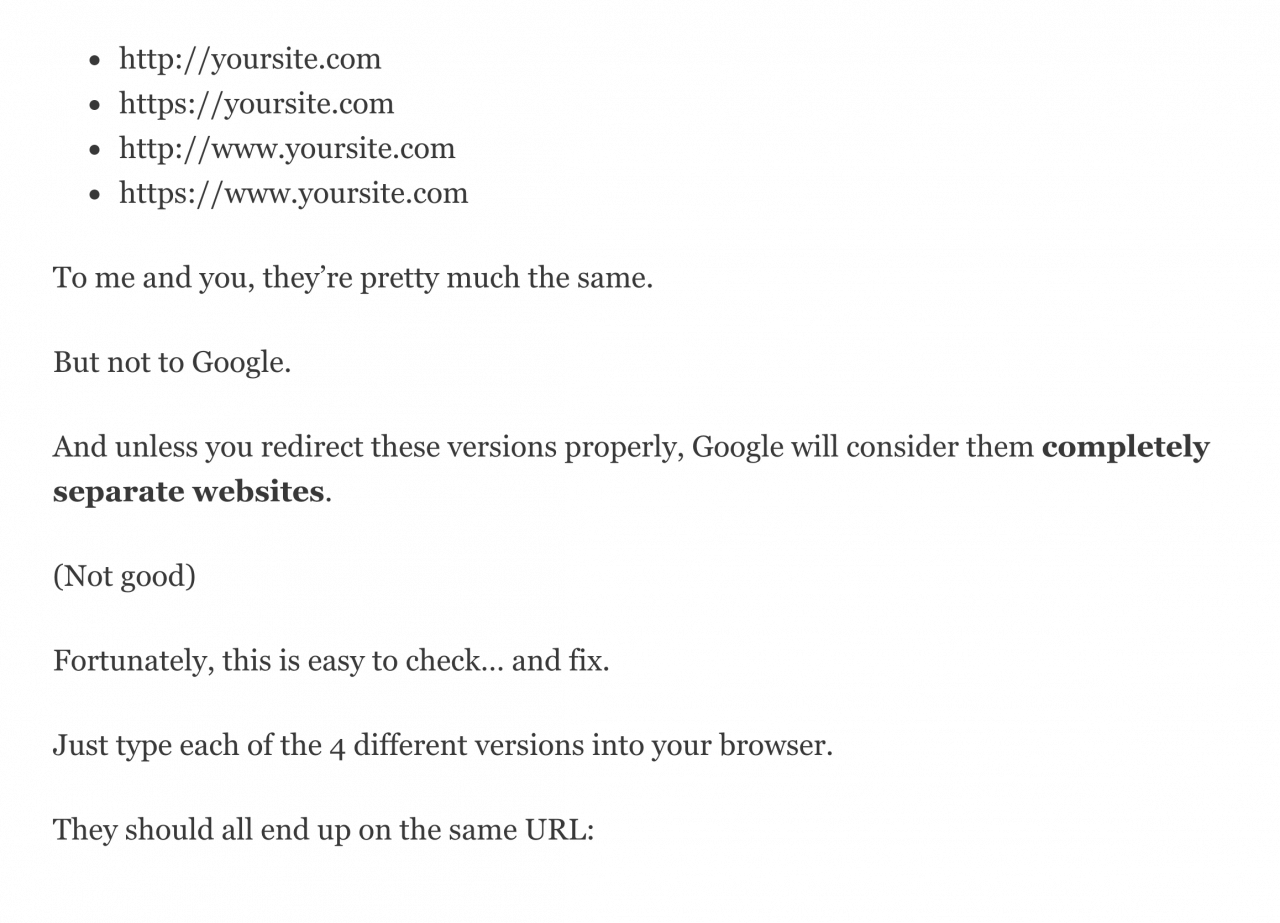
This isn’t rocket science.
But it’s hard to picture this idea in your mind.
So our designer made a simple visual that makes this concept easy to understand.

08
Build Links to Your Page
Now it’s time to actively build links to your content.
Specifically, we’re going to tap into 3 link building strategies that are working GREAT right now.
Broken Link Building
Here’s where you find a broken link on someone’s site…
…and offer your content as a replacement.
For example, this is an outreach email that I sent to a blogger in the marketing niche:
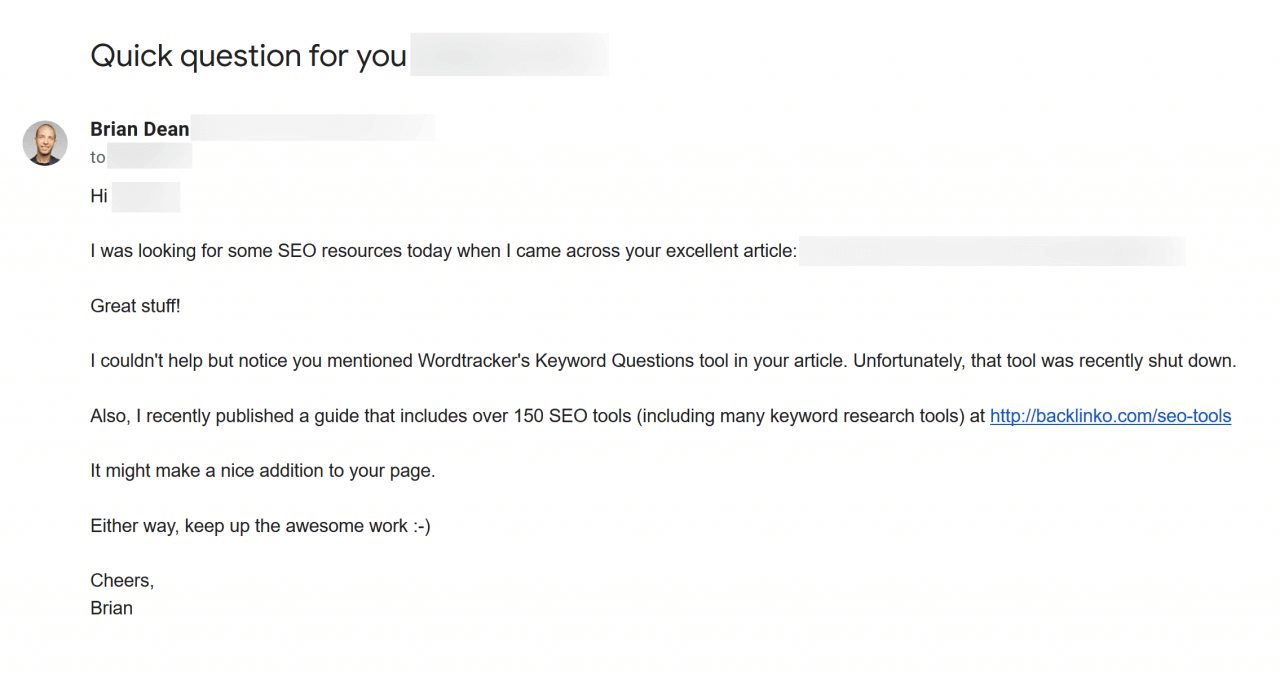
(Note how specific I am. I don’t say “Please consider linking to me in a blog post”. I have a specific place on a specific page where my link makes sense)
And because I helped the person out BEFORE asking for anything, they were happy to add my link:
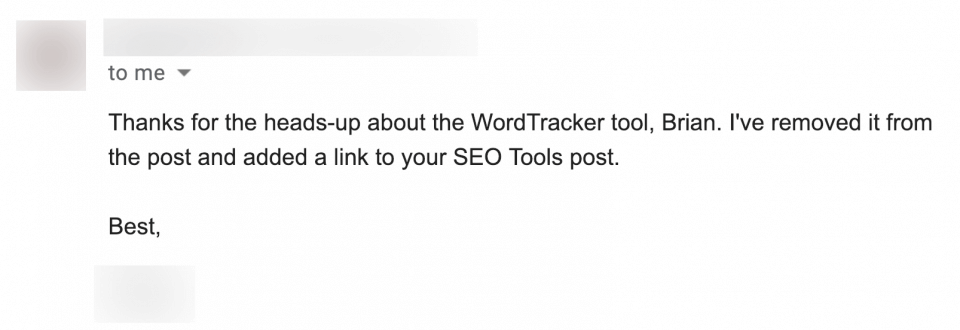
Competitor Analysis
This strategy is old school.
But it still works.
First, find a site that’s ranking for a keyword you want to rank for.
For example, I’m trying to rank for the keyword “SEO Audit”.
So I grab this result from the first page…
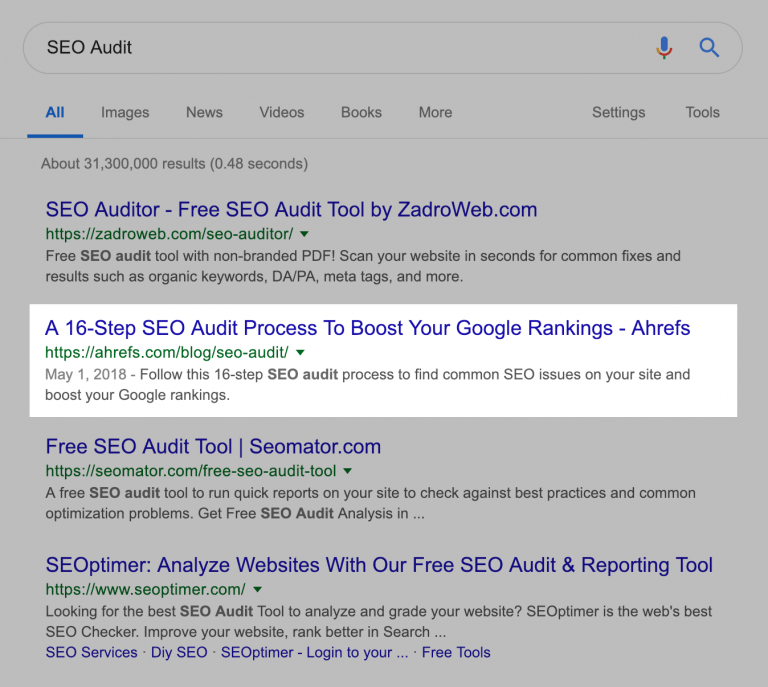
…and look at their backlinks.

I can see that this page has links from 160 domains:

So I should be able to get at least a handful of the same links they have.
To do that, I go one-by-one through their backlinks.
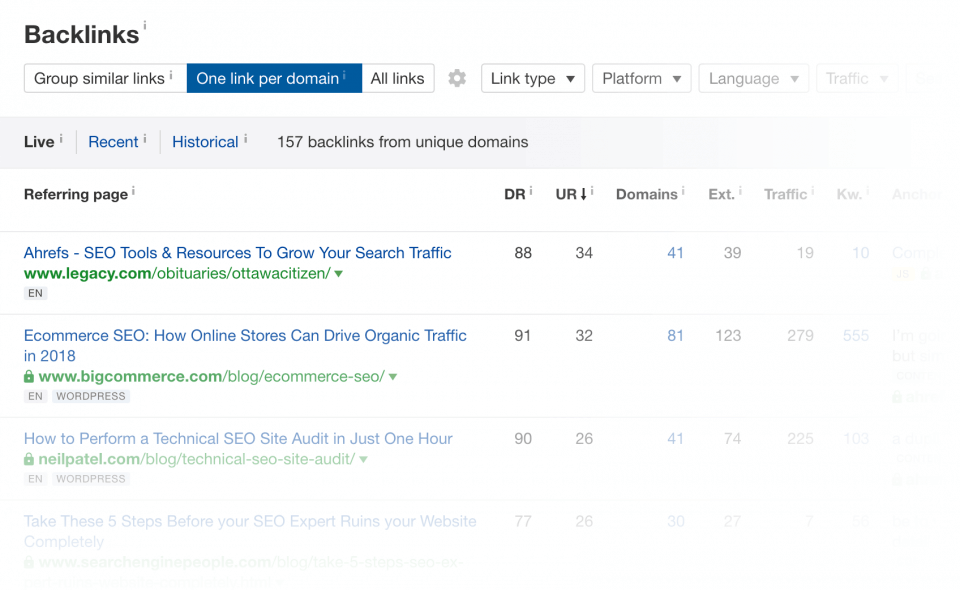
And find pages where my link would add value.
For example, this post mentions the Ahrefs content by name:

There’s no reason to link to my post there. So I moved onto the next opportunity on the list.
And I came across this post:
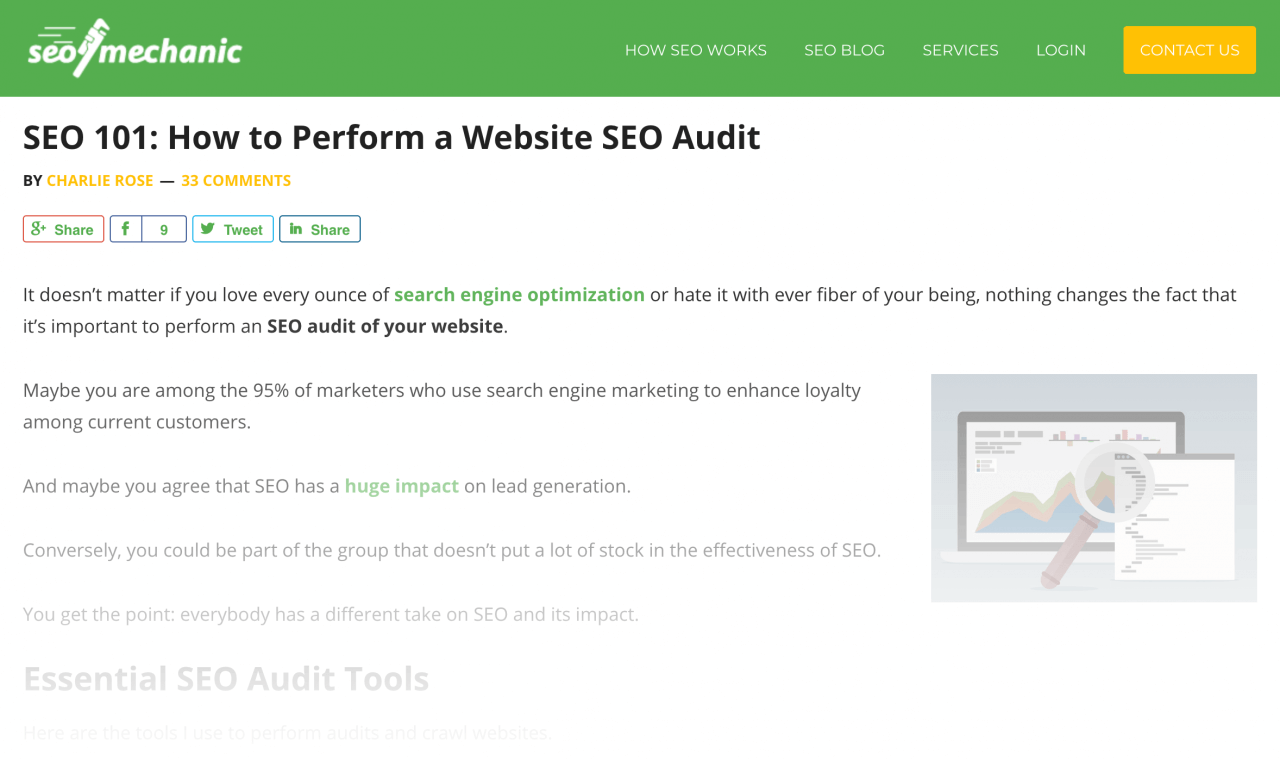
This time, the link to Ahrefs is part of a big list of resources.
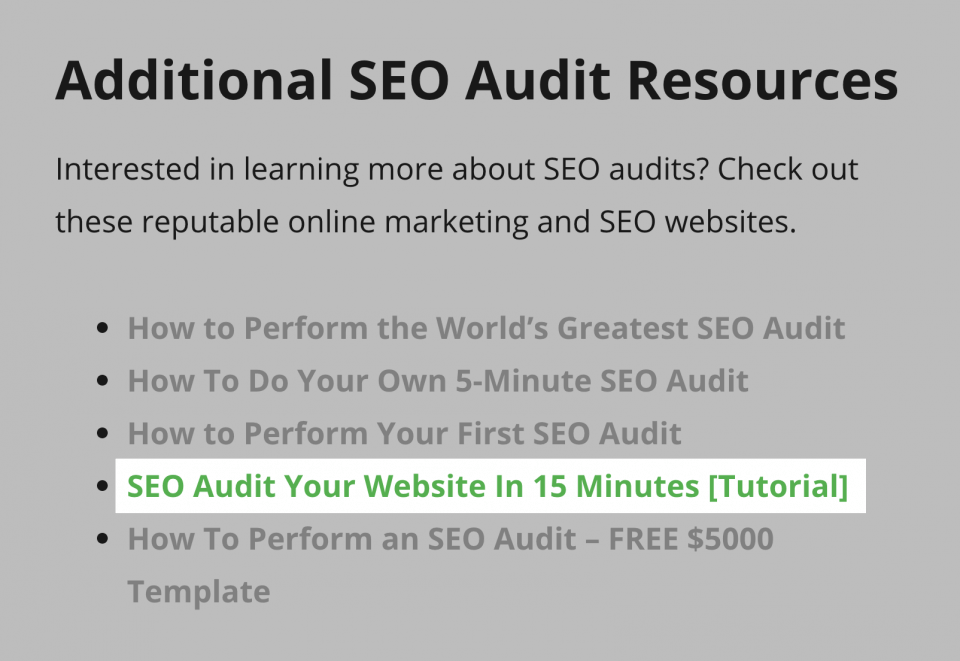
A list that would be even BETTER and more complete with a link to my SEO audit post.
Evangelist Method
This strategy is less about links… and more about getting your content in front of the right people.
(Specifically: people that run blogs in your niche)
I’ll explain how this strategy works with an example…
A while back I wanted to promote a new Skyscraper Technique case study.
So I used BuzzSumo to see who recently shared content about The Skyscraper Technique.
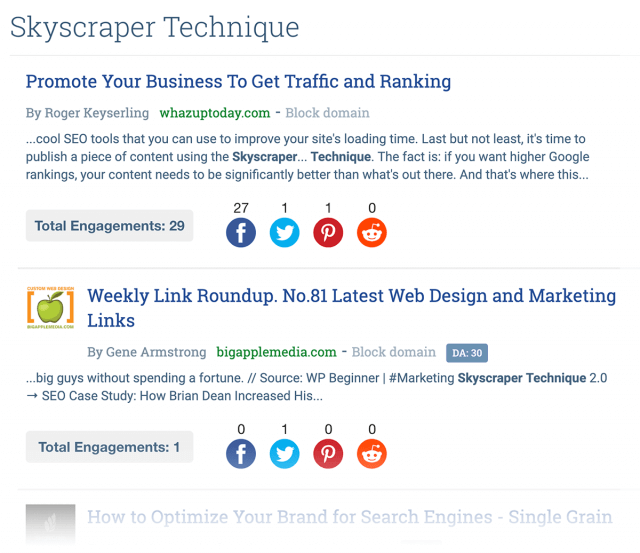
And emailed everyone a variation of this template:
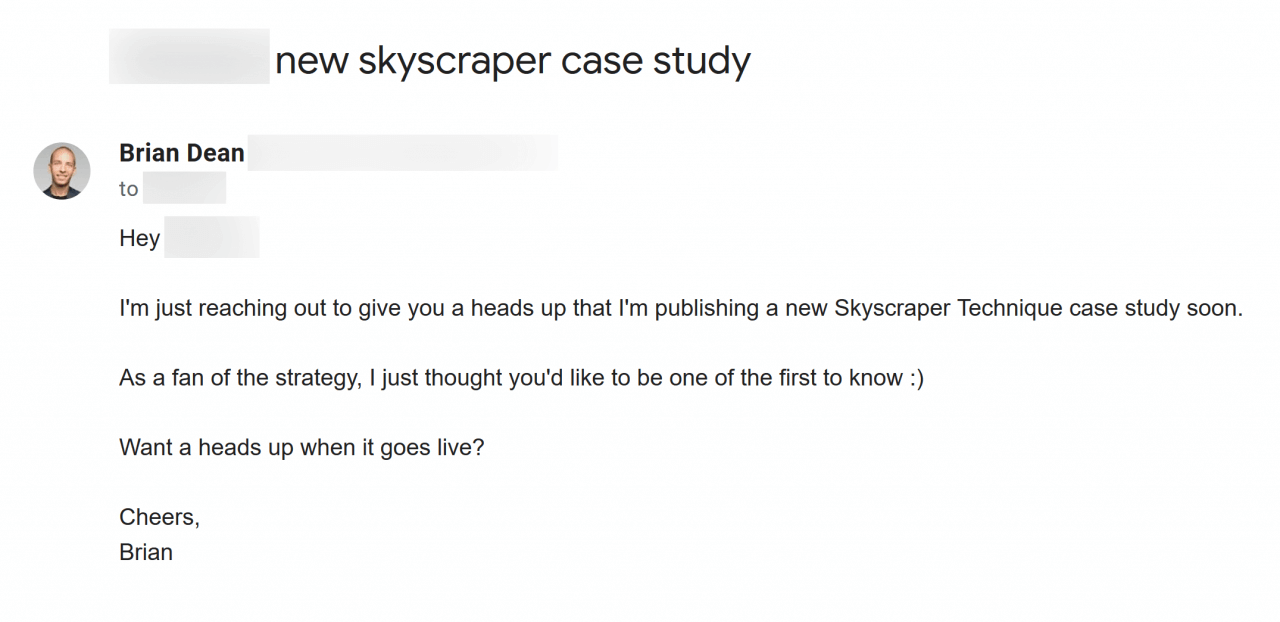
And when they replied “sure, I’ll check it out”, I sent them a link to the post:
Which led to dozens of shares to my brand post:
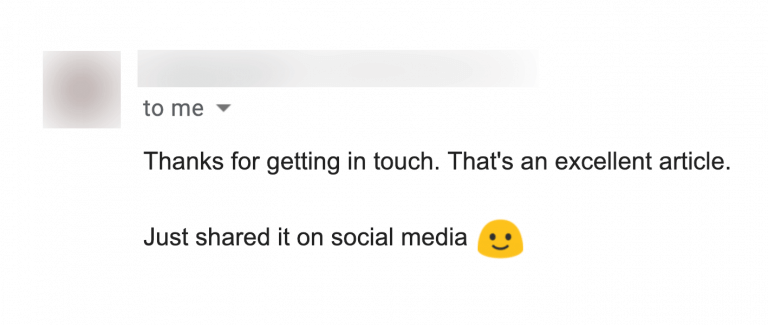
09
Improve and Update Your Content
This is working amazingly well right now.
removed old screenshots and images:
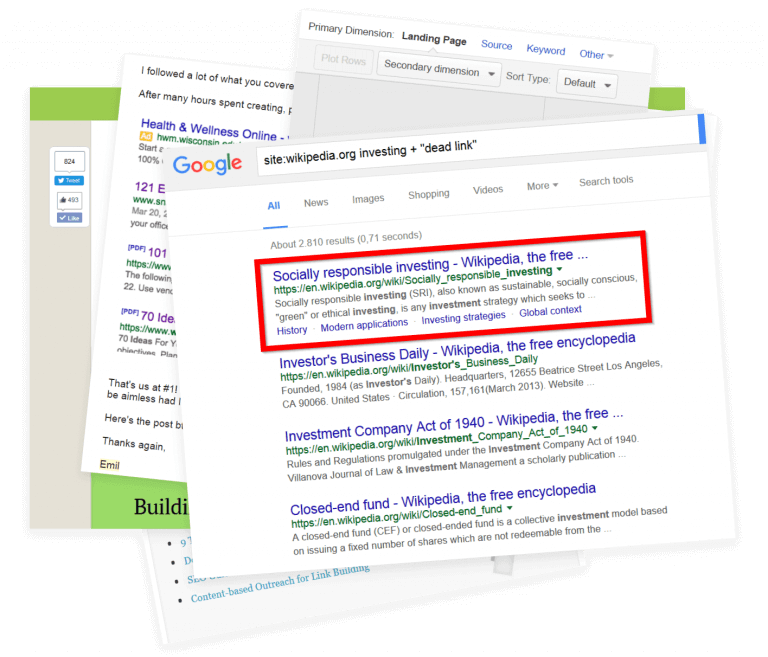
Added new strategies:

And deleted strategies that didn’t work anymore:
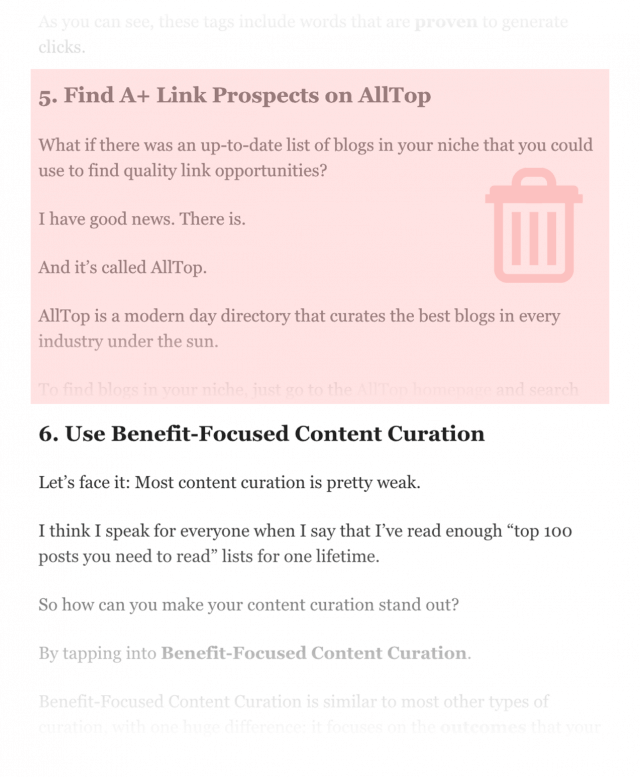
The result?
An 62.60% organic traffic boost to that page:
